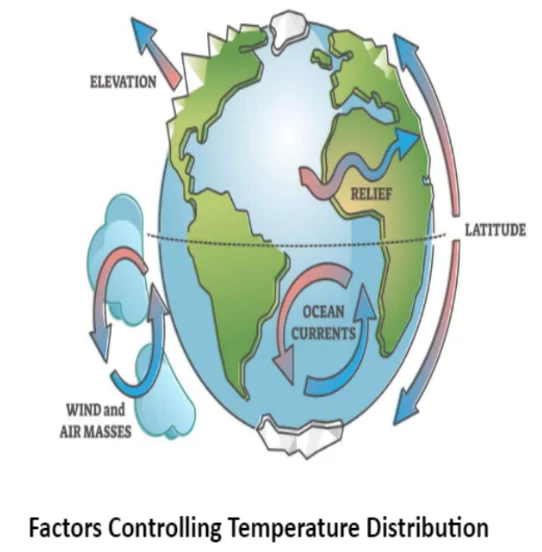![]() April 29, 2024
April 29, 2024
![]() 7570
7570
![]() 0
0
Temperature distribution across the Earth’s surface is influenced by various factors such as latitude, altitude, proximity to the sea, and atmospheric circulation. Understanding these factors helps us grasp why certain regions are hotter or colder than others, impacting climates and ecosystems.

| Must Read | |
| Current Affairs | Editorial Analysis |
| Upsc Notes | Upsc Blogs |
| NCERT Notes | Free Main Answer Writing |
A multitude of factors, including latitude, altitude, proximity to the sea, and atmospheric circulation, play crucial roles in determining temperature distribution. By considering these factors, we can better understand the variations in temperature across different regions, aiding in weather prediction, climate modeling, and environmental management efforts.
<div class="new-fform">
</div>
Latest Comments